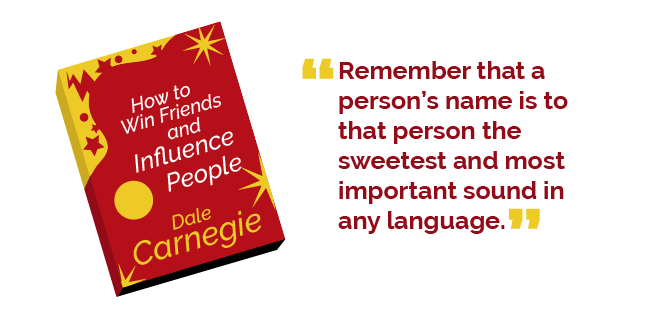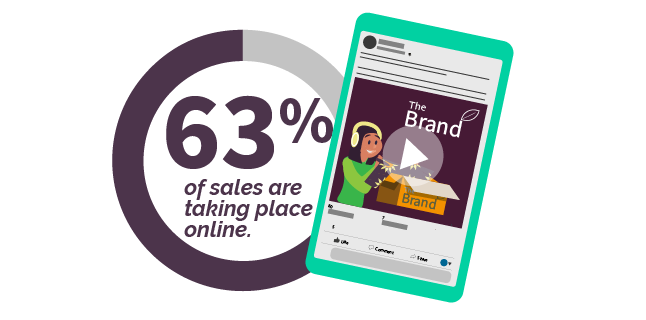One of the most unique and beneficial things about content marketing – and blogging in particular – is that you have the ability to connect and engage with your readers online via blog comments.
You have the capability to share your passion with them – your brand – and connect with prospects from all over the world. And most importantly, you yield the power to nurture these prospects until they become paying customers. This type of interaction is priceless.
If you have enabled comments on your blog (which I’m sure you probably have) then you obviously want engagement. That is, for your readers to interact with your content.

But why is it then that so many of these comments end up being a one-sided conversation?
Forget that precious interaction.
Instead of inviting your readers to converse with you, you’re using their comments purely to show other readers that people actually read your content. And you could be missing out on some lucrative conversations.
Whenever you receive a genuine blog comment, it’s a good idea to reply to it. Even if the comment doesn’t actively probe a response.
For a busy blog, it might not be possible to reply to all the comments. Though you should still try to.
But if you’re new to content marketing, it’s good practice to engage with your audience as much as you can. It’ll have tremendous benefits for your brand.
A Note on Accepted Blog Comments
You might have noticed that this blog refers to replying to all accepted blog comments.
When you, or a reader decides to leave a comment on a blog post, that comment is not usually auto-published.
Often, with mainstream websites, there are strict approval mechanisms for blog comments. This means your comment will need to be read first. Then approved by the website editor before it is published.
As a content creator, this gives you the power to restrict any comments which could be harmful or rude. And perhaps worse – any that may harm your reputation.
While it’s good to protect your website’s shell, I would advise approving as many relevant comments as possible – within reason. Obviously, that doesn’t extend to spam comments.
As you’ll see later on in this article, even if someone shares a comment which contradicts your viewpoint, this can present you with an opportunity rather than a hindrance.
So, if you haven’t already, it may be a good idea to go through your blog’s security settings. Check your comment approval section, then decide how much control you want over the comments appearing on your blog.
5 Reasons Why Should You Reply to All Accepted Blog Comments
Content marketing opens up the opportunity for brands and consumers to openly interact, forge connections and get to know one another better.
When a reader leaves a comment on your site, they’re inviting you to speak with them – a gold dust opportunity.

But aside from simply using it as a way to increase your sales, there are a few more reasons why you should be replying to your accepted blog comments. Let’s take a look at them in detail below.
You can forge connections with your readers… and potentially turn them into quality leads
How many times have you tweeted about your favourite brand or a celebrity? Then felt a gush of excitement when they liked, or even replied to that Tweet?
And then how many of those brands or celebrities have you continued to be an advocate for? Was it in part, due to that one interaction they made with you?
Well, the same concept applies to blog commenting.
When you reply to a comment on your blog, you are taking that one remark from an individual and turning it into a purposeful conversation. You’re engaging with those individuals who have taken the time to engage with your work. These people read, reply, share and admire your work. And they’ll be hugely appreciative of the fact that you have acknowledged their existence and their thoughts.
Your customers are advocates for your brand. Everything you can do to build good and strong relationships with them will pay off in the long run.
In fact, with statistics suggesting that it costs 5 times more to acquire a new customer than it does to retain a returning one, taking the time to sit and reply to your comments section doesn’t seem like too big a price to pay.
There’s a few things you should consider when replying to your comments to help bolster your relationships with customers.
For example, addressing the reader by their name or username is essential.
In fact, if you’ve read Dale Carnegie’s book How to Win Friends and Influence People, you’ll remember this famous quote:

You should also try to remain as authentic as possible in your tone, and not come across too formal. It’s an obvious statement to make.
But too often we read blog comments where the author refuses to acknowledge another opinion. Or admit that they themselves could even be wrong. And in the end, they just seem obnoxious in order to strive to be an authority.
Even if some comments don’t warrant a response, saying a simple ‘hello’ can go a long way in building relationships. If you’re stuck on what to say, try some of these ideas:
- [NAME], so thrilled you stopped by!
- Thanks for reading the post!
- Hello, thanks for reading!
In essence, anything you can do to connect and start a conversation with your readers is a win. If you can make them feel appreciated. Or like they’re being listened to, then even better. Because they’ll be far more inclined to stay loyal to your brand and engage with you in the future.
It’s a place to give your brand a voice
With consumers becoming increasingly digitised, so too is the way they connect with brands. No longer is a simple exchange with a sales colleague the technique needed to prove your company’s authority.
Today, an estimated 63% of sales are taking place online. This means consumers are arriving on websites looking for virtual affirmation. That is, that they should trust and purchase with that brand.
In this sense, having a brand with a friendly face is more important than ever. And that friendly face needs to funnel right through your content.

No longer do formal, distant, and powerful messages build trust between the brand and customer anymore. Instead they need friendly communications. Ones that put a personality behind a brand.
For prospective customers landing on your content, this means giving your brand a real voice. And you can do this easily by replying to customers’ comments.
It doesn’t matter how conversational you make your blog’s tone. Until you start replying to comments you will remain a faceless brand to that reader. So, you need to take the opportunity in your comments section to create a voice. This will go a long way to prove your authenticity too.
But this doesn’t mean abandoning your brand’s personality or boundaries. Instead, it means taking the time to really listen to what your commentators are saying. And then replying in a way which demonstrates you’ve listened.
An obvious way of doing this is to reply to any direct questions which appear in your comments section. Even if that question has already been answered in your lengthy blog post.
But for those just sharing their viewpoints, consider this an opportunity. It could involve creating a whole piece of content influenced by their comment (and then letting them know in your previous blog’s comments section). Or by simply saying thank you, and referring back to their opinion within your reply.
However you choose to reply to your comments, just remember to keep them as authentic as possible. It’s the only way you’ll ever truly find the right voice for your brand.
You can solidify your place as an expert
We know that content marketing is great for helping you to become a thought leader within your industry.
But to be the best in your business, you need to really know your stuff.
So when it comes to demonstrating your expertise, what better way to do so than by replying to comments?
This can be particularly effective if you have an old blog post which drives high volumes of traffic.
For example, say you were a software company that had written a blog post around 8 years ago. This article revealed some of the great but lesser known features of Windows 8. Today, with Windows 10 now in widespread use, that blog post would be pretty outdated. However, it may still rank highly and drive a significant volume of traffic to your site.
Instead of leaving your readers frustrated and bouncing from your site, speak to them! You could use the comments section as a place to direct readers to a more relevant article. For instance, your newer, more up-to-date blog post on some great Windows 10 features.

Not only will you be satisfying your prospective reader, but you’ll be demonstrating your thought leadership. Not to mention driving traffic to a quality and timely piece of content which is more relevant to their search.
In addition to this, another way of using your blog comments is by answering particular questions. That is, some of the most probing and controversial questions. This is a great way to solidify your position as an expert.
As tempting as it may be to ignore comments by readers who voice controversial opinions or difficult questions…don’t. You will only do more harm than good if you do choose to ignore them.
Take the time to craft an eloquent and justified response which acknowledges and answers their comment. And in doing so, you’ll be placing yourself in a position as the authority. You’ll prove to other readers that you really do know your subject like the back of your hand. And no matter what difficult questions or comments arise, you’ll always be able to give an accurate and justified response.
It’s a place to admit to your faults
As a brand, it can be tremendously difficult to admit when you’re wrong. Especially if you’re trying to craft your authority within the industry.
Many perceive the idea of acknowledging your inaccuracies as a sign of weakness. And that you’re not to be trusted as a brand.
But with 9 out of 10 consumers admitting that they will stop purchasing from brands that lack transparency, you should always acknowledge your mistakes.
Remember the shocking handling of the 2017 United Airlines debacle? When a passenger was filmed being forcibly dragged off a plane by security? He was randomly selected – and declined – to give his seat up to airline maintenance workers.
That alone was enough to tarnish the reputation of the brand. But things turned much more sour when CEO Oscar Munoz issued a cold, dismissive apology. Rather than admit fault, he praised his employees for following proper procedures.
Proper procedure or not, delicate situations like these require understanding and acknowledgement. Something which United Airlines wasn’t prepared to offer – and – as such, tarnished their reputation.
Now I’m not saying that you are ever going to make a hideous blunder such as this on your blog. But I’m demonstrating how refusing to acknowledge your mistakes can actually hinder your brand.
It’s easy to make mistakes within your content. Sometimes you may forget to quote a source properly or spell someone’s name incorrectly. Or even forget to regard a particular opinion when writing. Whatever it is – as long as it was a genuine mistake, you have no need to fear.

We’re all humans and we’ve all made inaccuracies in our work before. And your audience will forgive you if you show your vulnerabilities.
If your readers call you out in the comments section and find discrepancies within your work, then face up to them. Admit your mistake, apologise, and thank your concerned reader for taking the time to raise their point.
You’ll be appreciated far more for acknowledging your mishap than if you pretend to ignore and preserve your pride.
You may just find your next piece of gold-dust content
Effective content marketing is all about creating and sharing relevant, valuable and sought-after information with your target audience.
If they discover that you can cater to their queries and that you deliver content with value. Then it follows, they’re going to turn to you in the future. Especially when they need extra help or are looking to make a purchase.
And as great as keyword research is in discovering new topics to create content about, it takes time. As a pretty time-consuming process, you may not have the luxury to commit to it.
And rather than wasting your time on doing lots of research, wouldn’t it be much easier if you had new content ideas sat right under your nose? (Or in this case, right under your blog).

When you interact with the comments on your blogs, you’re striking up a conversation. A dialogue between you and one of your engaged readers.
Here, there is an obvious opportunity to find out more about your reader’s interests. And what kind of content they may want to see from your brand in the future.
This can be like gold dust for brands. You can hear straight from the horse’s mouth about the type of content which is most sought after. And most importantly, the content that caters to your audiences’ needs.
You can even alert them to the new content you’ve created for them. Do this by replying to them with a link to that new blog. And that can help encourage other interested readers to click onto your new content.
So, by using your comment replies in this way, you’re building invaluable connections with your audience. But you’ll also be creating content that they have asked for. As well as discovering great opportunities for your website’s SEO, by finding unique gaps in the content market.
Conclusion
Whether you’re a part-time blogger or a high-brow brand, replying to the comments on your articles is essential.
Your comments section is invaluable. Here, you have a free, invited opportunity to speak directly with your prospects. So try to engage with them on a conversational basis.
From finding new inspiration for your content strategy, to crafting a credible reputation and even cultivating relationships. These things will turn your commentators into paying customers. And there’s no end to the benefits you can enjoy from responding to your readers.
So if you haven’t already, it’s time to enable your comments section and start conversing with your readers.
Working With a Marketing Consultant to Create a Content Marketing Strategy
We’ve seen in this article the importance of replying to your customers’ blog comments to help your brand’s growth.
But for that growth to happen, you first need to have a robust content marketing strategy. One that will start driving those readers to your website in the first place.
Content marketing is a much more complex strategy than simply posting a blog each week. You can’t just cross your fingers or hope that your target audience finds your content. It’s a time-consuming and richly detailed process.
It involves researching and creating media that addresses your searcher’s queries. Helping to guide their future purchasing decisions. And it also involves a lot of SEO optimisation to make sure that content is being seen by the right crowds.
Often, brands turn to marketing consultants like myself to help grow their website. Usually because they don’t have the time or resources needed to make their SEO strategy a success.
If you’re looking for help to drive more traffic to your website. Or you want to improve your conversions, why not get in touch with my team? With over 10 years’ experience working with clients to grow their businesses, we know exactly what it takes. And we can help you to drive the growth you need to excel online.







